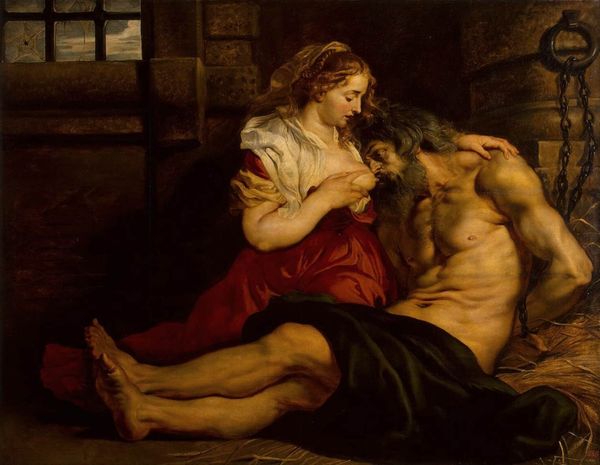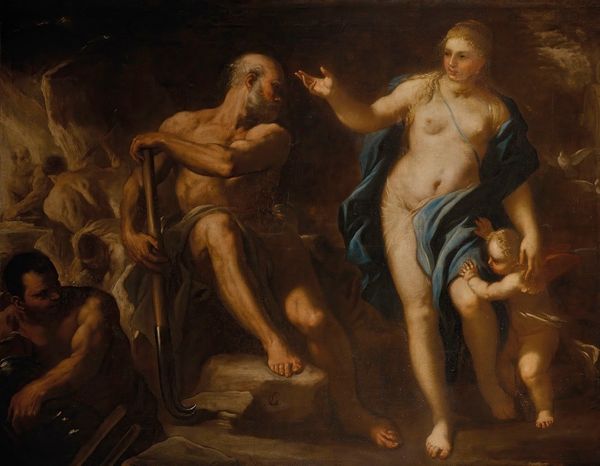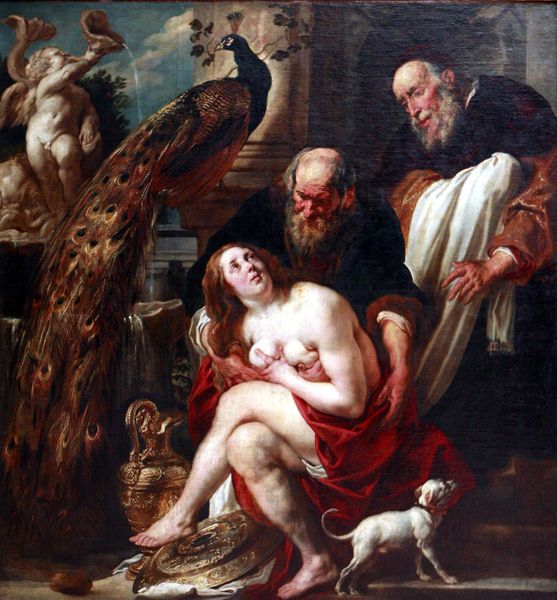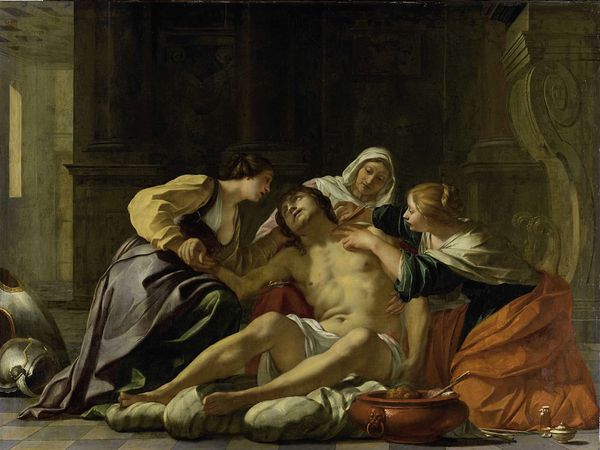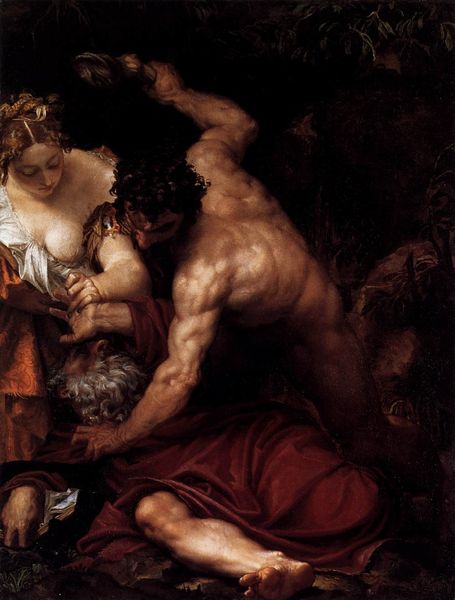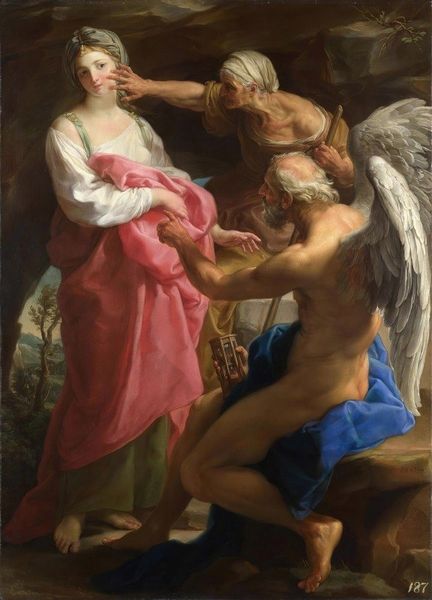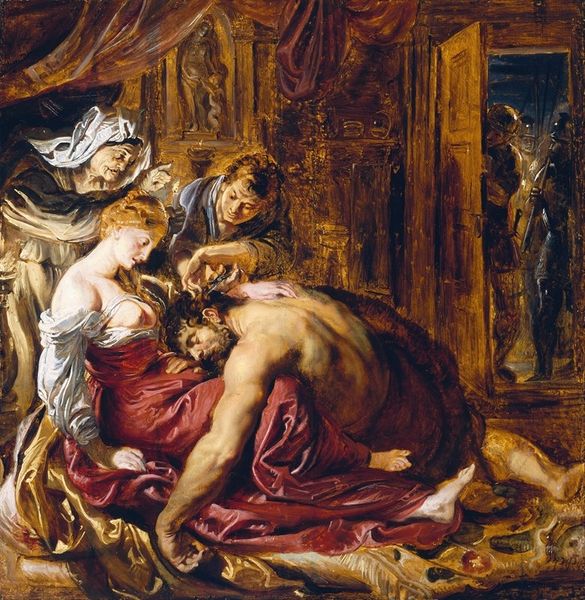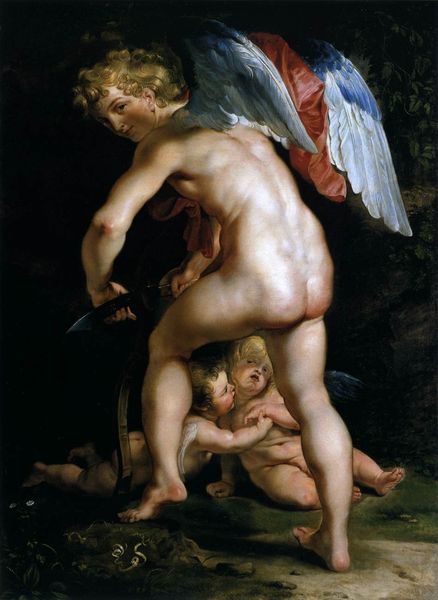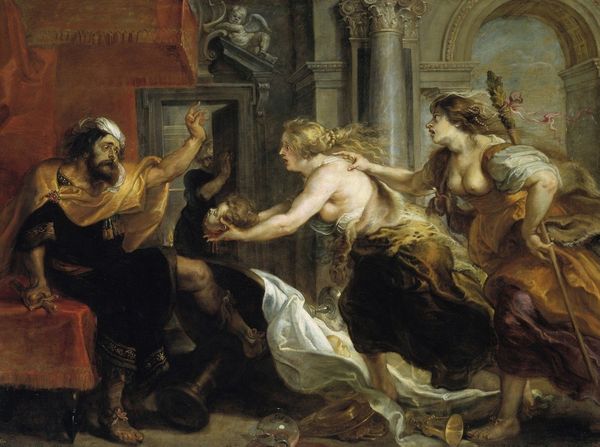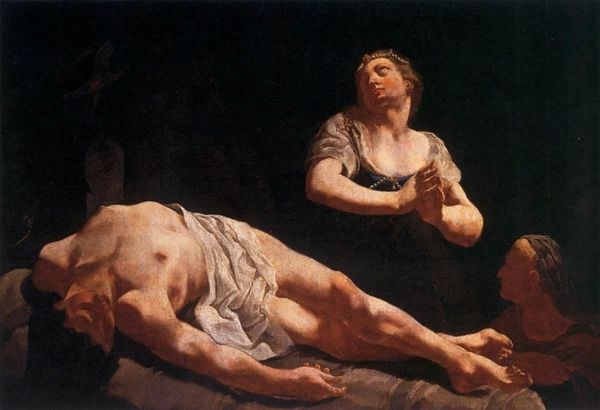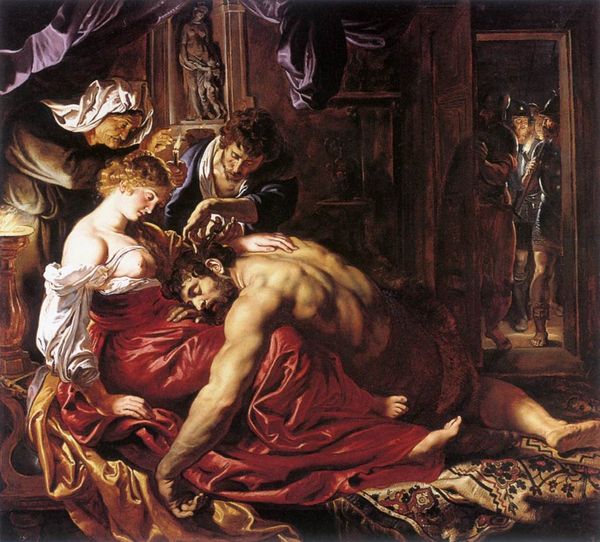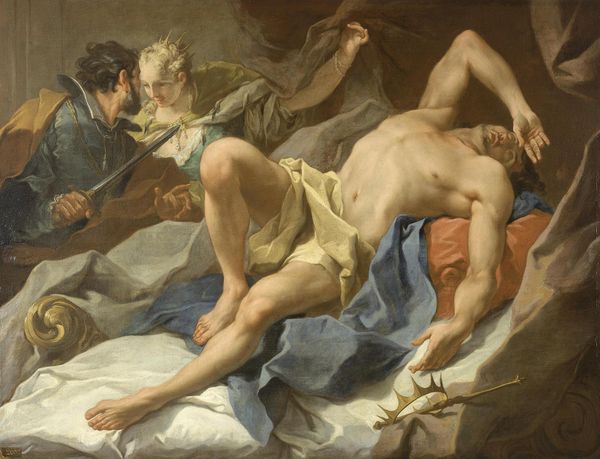
oil-paint
#
allegory
#
baroque
#
oil-paint
#
oil painting
#
history-painting
#
nude
Copyright: Public Domain: Artvee
Peter Paul Rubens painted "Cimon and Pero" in oil on canvas, a favored medium during the Baroque era, lending itself to the dramatic and expressive qualities seen here. Rubens mastered the layering of pigments to create depth and luminosity, enhancing the texture of skin and fabric. His ability to represent flesh tones is particularly notable, achieved by building up thin glazes of color. The broad brushstrokes, a hallmark of his technique, convey a sense of movement, evident in the folds of Pero's dress. The use of oil paint allowed Rubens to rework areas until he achieved the desired effect, essential for capturing the emotional intensity of the scene. This reflects the story of a daughter's devotion to her imprisoned father. The canvas and oil paint, though traditional materials, are handled with a virtuosity that elevates them. They serve as a powerful vehicle for storytelling. The painting transcends mere craft, revealing the depth of human compassion.
Comments
No comments
Be the first to comment and join the conversation on the ultimate creative platform.

